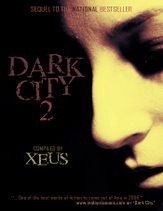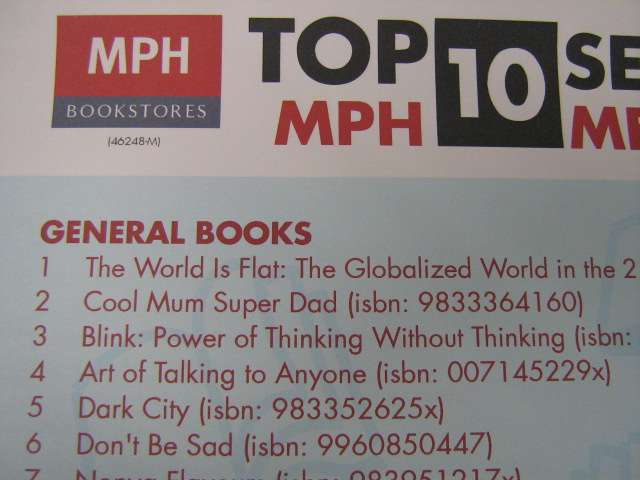Bestseller Lists

I was at MPH 1 Utama today, and voila! Dark City is on the bestseller lists!! They said it was a compiled list for the month of May, and they'd be changing it soon. Still, I'd better enjoy it while I can...who knows if I'd be there next month...
Anyhow, who would know more about being on the Bestseller List than Yvonne Lee at www.theskyiscrazy.com? And exactly how many books do you have to sell to get on that bestseller list?
Note that the bestseller lists in the newspapers like Star and Sun reflect only the sales tally for ONE bookstore for that particular week, in Star's case MPH MidValley and for Sun, Kinokuniya. Popular has its own bestseller list tallying everything they have sold from all their stores.
(Estimates that to get on a bestseller list for that particular bookstore for that particular MONTH = you have to sell circa 100 books.)
What drives a book to a bestseller's list? The answer: concerted publicity in one concentrated period of time from the bookstore/media. Miss that time period, and you might never get on it again.
Let's listen to the guru herself!
"I think it's true that which genre ( Fiction or Non) your title falls into can make a difference. Mine was under Non-Fiction on the Kino BS listing. It was there for about a month, from no. 8 to 6 to 4 then no. 2, I was told. (Lucky thing I got hold of the paper which stated it was no.2)
But in Popular, it was best-seller under Fiction (?), together with all the Mat Salleh best-sellers. In all honesty, I wasn't able to find out how many copies sold in a week to be named BS.
Local books, if you want to compare with international bestseller, a bit susah laaa. When Tash's book came, with so much hype, of course his books sold like hot cakes. It has all to do with publicity and the fact that it is an international BS.
That also made stores anticipate by ordering by the hundreds. Here, if one local book is ordered by a hundred, can say the store is very " hor bin" or very confident of the author oredi ;) But that has its season. Whatever naysayers say about a title being a hot-for-the-moment thingy or not, if you can hit it off when it first comes out, it's better than never to hit it ever, betul?
But for the record ( some people are curious and ask about this), my title sold 6000 copies in over 8 months and is going for the 4th print run ( btw, if you see the fresh print, please check the additional endorsement page! Some more got my favourite cartoonist's endorsement, hehehe...)
Then again, I was told that 6000 reflects the copies taken by the retailers from our distributor but how many books actually left the stores to readers, must wait for ALL stores to tally their latest updates together (very susah....even the stores themselves don't update the computer on how many books sold by weekly basis, some stores, I mean. some are frank to tell me that they didn't update yet!)
PS, I think a good rule of thumb of whether a book has been a b/s or not is to check the copyright page. See the date first published and the gap between first print and subsequent reprints. The more frequent, the healthier laa. I think).
The lesson here is, book selling involves too many 'moving parts'. There must be synergy from all parties, author's gungho attitude, active distribution, retailers who are active in paying the distributors on time,in order to get their stock, the display effort in stores, the promotions by 1)author 2) publisher 3)stores 4)media.....oh, yes, one more, I personally believe that book cover is VERY VERY important."






